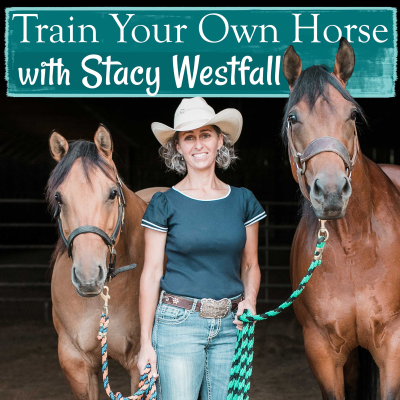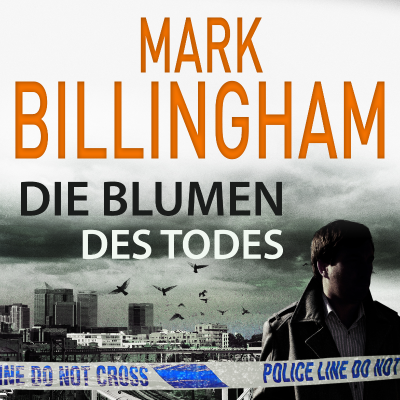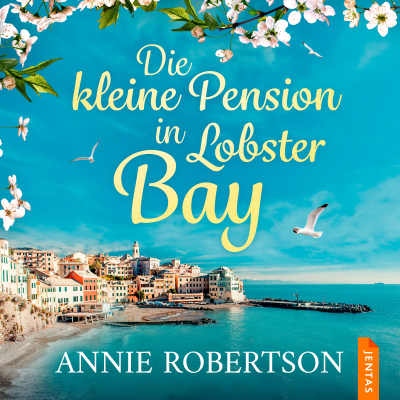
Train Your Own Horse with Stacy Westfall
Englisch
Gratis en Podimo
Kostenlos hören bei Podimo
Starte jetzt und verbinde dich mit deinen Lieblingspodcaster*innen
- Vertraut von über 1 Mio. deutschen Hörer*innen
- Über 1.000 lokale Podcasts und Shows – nur bei Podimo
- Keine Zahlung nötig
Mehr Train Your Own Horse with Stacy Westfall
Stacy Westfall teaches people how to understand, enjoy and successfully train their own horses. In her podcast, she shares all of her knowledge in her area of expertise: horses. She offers insights into issues that riders face in their own minds as well as the way they are viewing the challenges and goals they have with horses. She shares tips on becoming a better rider as well as a better leader for your horse. Discover how you can understand things from your horses point of view so that you can enjoy the learning process with your horse. When you are able to understand what your horse is experiencing mentally and physically the process of learning new things becomes more enjoyable. Your goals may be showing, trail riding or simply enjoying life with horses-all of which Stacy enjoys herself. She shares her own struggles and successes to allow listeners to understand that everyone experiences ups and downs. Through her podcast, website, YouTube channel and social media Stacy answers questions about: Fear, when to sell a horse, goal setting, safety, ground work, trailer loading, lead changes, reining, spins, stops, western dressage, ranch riding, when to get help, lessons, clinics and improving your safety, success and enjoyment of horses.
Alle Folgen
351 FolgenEpisode 364: A Pause While I Become A Student
In this episode, Stacy shares why she's taking a winter break from the podcast after seven years of weekly episodes. She talks about stepping into the role of student again—traveling, taking lessons in new disciplines, and learning alongside the horses she's trained. Stacy also explains how watching her horses make their own connections, like Willow linking a dressage exercise to the spin, deepens her understanding and shapes her next steps. Key takeaways: – Why taking time to learn from a new perspective can strengthen your partnership with your horse – How seasoned horses often reveal connections between disciplines long before we see them – The value of creating space to regroup, reset, and return with clarity – How you can stay connected while the podcast is on break—and how to share your feedback for future episodes This episode offers a thoughtful pause before the next chapter. Stacy invites listeners to revisit past episodes, stay connected through her website and email list, and share what they'd like to hear more of when the podcast returns.
Episode 363: Multiple Ways, Deeper Understanding — The Preschool of Horsemanship
In this episode, Stacy explains how teaching a horse to respond to more than one cue—whether that's leading and sending, or using reins, legs, and voice—builds understanding that holds up anywhere. The strength comes from having multiple ways to do things. Key takeaways: * Why relying on one cue or method can limit your horse's understanding * How variety in cues creates confidence and consistency * How deeper understanding shows up in both groundwork and riding This episode explores how developing multiple ways to communicate strengthens both horse and rider—creating clearer responses, better focus, and true understanding.
Episode 362: Discomfort Is Part of Learning — The Preschool of Horsemanship
This episode explores why moments of discomfort are not only normal but necessary—for both horses and riders—as they grow and learn together. Stacy explains how recognizing discomfort as part of the process changes the way we approach training and respond to our horses. Key takeaways: – Discomfort doesn't always signal that something is wrong—it's often the sign that learning is happening. – Horses "ask questions" through movement, and our ability to stay calm helps them find answers. – Riders often want certainty to avoid causing stress, but growth requires a stretch beyond the comfort zone. – Recognizing when you need new skills—or outside guidance—transforms frustration into clarity. This episode examines how accepting discomfort as a normal part of learning builds resilience, trust, and understanding—both in yourself and in your horse.
Episode 361: When Your Horse Hesitates at Halter Pressure—The Preschool of Horsemanship
This episode explores what hesitation at halter pressure really means—whether you're starting a young horse or checking the foundation of an older one. Stacy explains why the horse deserves to understand pressure from straight forward beforebeing tied, and how to safely prepare for the moment when the wall will only "speak" through halter pressure. Key takeaways: – The random "jog-off test" reveals whether horses truly understand halter pressure or just follow patterns and extra cues – Lunging with inside turns creates safe, controlled opportunities to introduce straight-forward pressure before tying – Common handler habits—walking back, switching to driving cues, or adding tools—delay true learning about halter pressure – Two predictable reactions to sudden pressure show whether a horse is prepared for tying or practicing unsafe responses This episode examines how testing halter pressure understanding builds trust, safety, and clarity. It's especially valuable for riders whose horses sometimes lag, brace, or pull back—reminding us that revisiting these preschool lessons can reveal and repair missing links in any horse's training.
Episode 360: How Lightness Gets Lost — The Preschool of Horsemanship
This episode explores how a horse's lightness can quietly fade long after the "preschool" stage—and how that process often begins in the smallest, most overlooked moments of handling. Using Baby Whisper's first haltering lessons as a lens, Stacy shows how early experiences with pressure and release shape a horse's lifelong feel, and how similar patterns appear in mature horses that have learned to lean or resist. Key takeaways: – Lightness isn't something added later—it's created, or lost, from the very first moments of contact – Horses become heavy when we stop noticing where release actually happens – Even two pounds of unnoticed pressure on a lead rope can reshape a horse's expectations – True refinement begins by returning to the body, not the halter This episode examines how lightness develops—and how it disappears—through the rider's timing, awareness, and feel. Whether you're leading, riding, or refining, it reveals why every conversation with your horse begins with how you release.















































